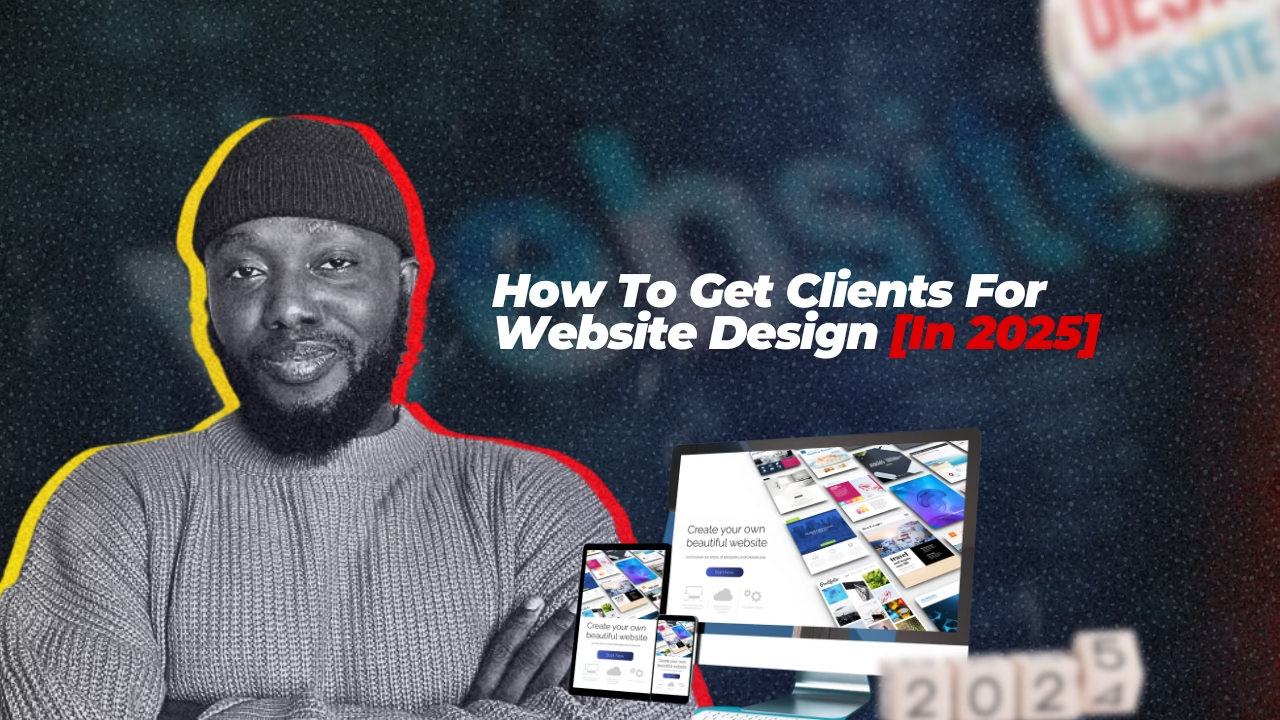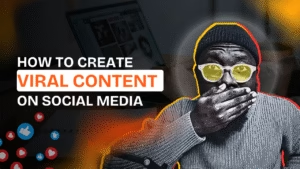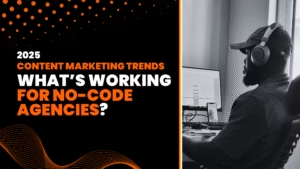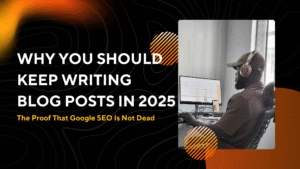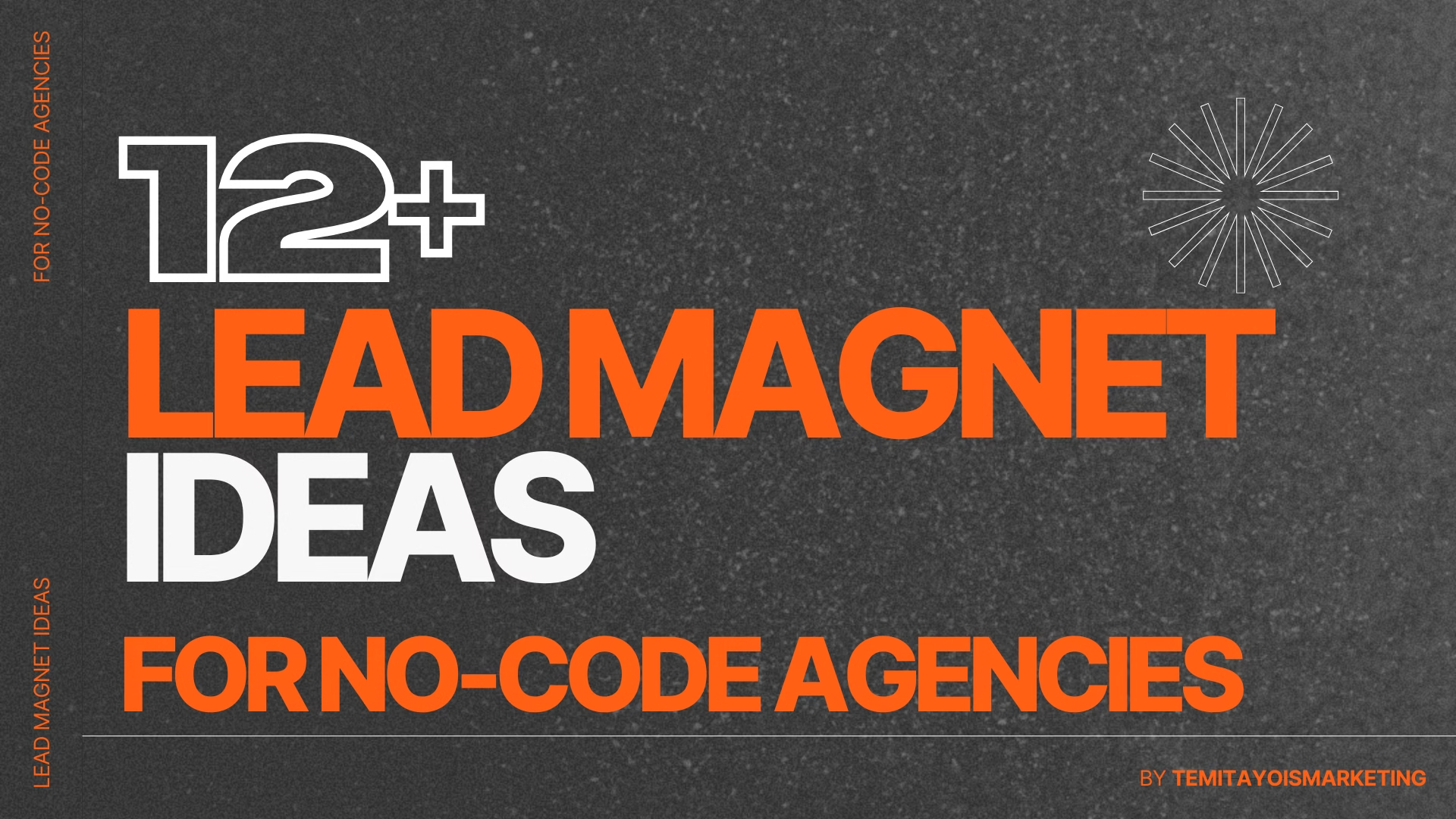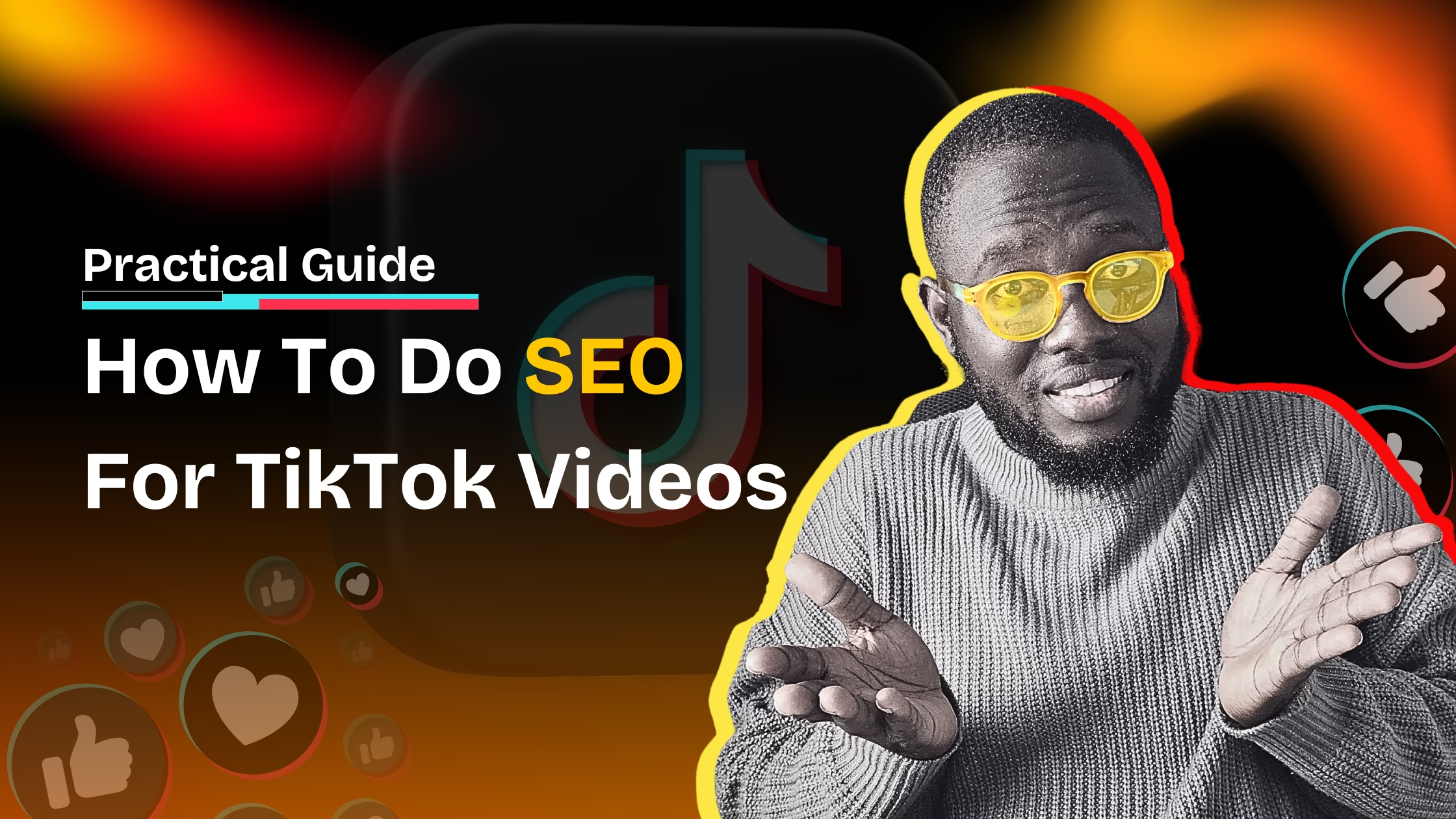I’ve played a key role in driving direct response marketing, structuring web content, copywriting, and generating traffic through SEO for a no-code web design agency that consistently closes over $50,000 in deals each month.
This experience has provided me with valuable insights into how to get clients for website design as a web design agency or web design freelancer.
And, I’m excited to share the detailed process I followed with you below.

An Overview Of The Key Steps Followed
Step 1: Build a buyer persona or ICP document
Step 2: Build a portfolio (Proof of Work for Clients)
Step 3: Build a social media presence for yourself and your brand
Step 4: Create a lead magnet (or an irresistible offer)
Step 5: Use a system for tracking & engaging with leads
Step 6: Create a social proof system
Step 7: Do Outbound Messaging
Step 1: Build a Buyer Persona or ICP Document
Creating a detailed buyer persona or Ideal Customer Profile (ICP) is the foundation of effective client acquisition for a web design firm or freelancer.
This step involves identifying:
- Demographics: This includes the age, location, industry, and job roles of your ideal customer.
For my client mentioned above, I focused on entrepreneurs, C-suite executives, founders, and small business owners
- Pain Points: You must identify the challenges your target audience faces and how your services solve them.
My client was offering no-code web development services, so my angle was- the agency’s services provide a more affordable and faster system for businesses to build apps and founders to test ideas.
- Goals: What success looks like to your ideal client, such as a higher conversion rate or improved user experience.
For my client, it was simply providing a bespoke online presence that clients otherwise would have gotten at an excruciatingly higher cost.
- Preferred Communication Channels: Email, social media, or phone.
If you build a well-defined buyer persona. It will help you tailor your marketing efforts and ensure you speak directly to your ideal clients.
Free Resource: You can use the Hubspot Make My Persona Tool to build detailed buyer persona documentation for yourself/brand.
Related: How To Find Your Target Audience
Step 2: Build a Portfolio (Proof of Work for Clients)
Your portfolio showcases your skills and experience, making it easier for potential clients to trust you.

But when building your portfolio, there are certain elements you must focus on:
1. Try to make sure the projects in your portfolio align with your buyer persona’s needs.
For example, if your buyer persona is or your ideal customer in the real estate business or real estate niche, a portfolio of web and mobile apps designed for clients in the construction, real estate, rentals or estate sales niche will be more relevant to convincing clients to work with you sooner.
2. Web Design is a visual niche.
Make your portfolios visually appealing and use screenshots, pictures, prototypes, and videos to highlight your work.
3. Where possible, include the results of your work, such as metrics like increased traffic, improved user engagement, or faster page load times.
4. Try to add testimonials or case studies from the client to that portfolio or case study page as it establishes the client’s satisfaction with the job done.
If you’re just starting, you can create sample projects — which we like to call mock portfolios — or collaborate with designers, agencies, or brands on smaller gigs (which can also be for free) to build an impressive portfolio.
For my client, I wrote the pages of past work done in a story-telling manner, starting with a summary of what the brand does, the brand location, the problem they were trying to solve, the solution my client offered and finally the results of the projects/solution.
We also added some mock projects and simply tagged some necessary information as hidden with an NDA.
Step 3: Establish a Presence on Social Media Platforms
Identify the social media platforms where your ideal clients are most active and build a presence there. Usually, for web design, this will include:
- LinkedIn: For B2B clients, sharing case studies, success stories, or thought leadership content.
- Instagram: For visually-driven industries, showcasing your design projects or client testimonials.
- Twitter: Engaging in industry discussions and sharing quick tips.
- Facebook Groups: I discovered that many small business owners and entrepreneurs with no web presence for their brands are often active in Facebook groups
Please Note: Your choice of social platforms will depend on your ideal buyer persona documentation. For example, if you’re purely in the fintech niche and simply offering web re-design and conversion rates optimization- your focus might be only on Linkedin

The above contains details of subscribers to my client’s bi-weekly LinkedIn newsletter, which I started from 0 to over 800 subscribers in 2 months.
Regular activity, including posting helpful content, commenting on posts by these entrepreneurs and people in your niche, and directly messaging them, especially on LinkedIn, establishes your authority and keeps you visible to potential clients.
Step 4: Create a Lead Magnet (or an Irresistible Offer)
A lead magnet entices potential clients to engage with you. Examples include:
- A free website audit or consultation tailored to their needs.
- A downloadable guide on improving website performance or design.
- A free trial or demo of your services as a website designer.
For my client, I shared an idea to create a free session or document that estimates how much it costs to build an app without coding.
However, the client modified it into an AI tool that allows visitors to simply type in their project ideas, and get estimations of duration and costs to build with no-code in under a few minutes.

The goal of your lead magnet is to provide value upfront, establishing trust and positioning yourself as an expert in the field of web design.
Step 5: Media Buying & Running PPC Advertisement
In my experience, looking at how to get clients for website design, I’ve seen a major mistake several agencies make, which is sending traffic directly to their service pages or website
Your lead magnets, as stated above, when created, should be the primary platform to send a majority of your traffic, as it allows you to lead with value first
Step 5: Use a System for Tracking & Engaging with Leads
Keeping track of your leads, where they came from and how they engage with your website or brand ensures you can follow up effectively.
Consider using:
- CRM Tools: I suggested the use of platforms like HubSpot or Pipedrive to organize and manage leads and collaborate with sales experts.
- Engagement Systems: Email drip campaigns, personalised follow-ups, or scheduling calls.
This system keeps your pipeline organized and maximizes your chances of converting leads into paying clients.
Related: Top Website Key Performance Indicators and How To Check Them
Step 6: Create a Social Proof System
Potential clients don’t trust you because they don’t know you but they’ll trust social proof, such as:
- Client testimonials and reviews.
- Case studies demonstrating successful projects.
- User-generated content or client shoutouts on social media.
Encourage happy clients to leave reviews and highlight their successes in your marketing materials.

For my agency client, we used clutch as a social proof platform — as it also helps with lead generation — and I wrote the content for the clutch page to reflect the unique values the agency stands for. I also suggested video interviews with past clients to be done by the sales and customer service team to be shared on their official YouTube channel
Related: Social Proof Marketing Secrets: How To Use Social Proof On B2B Websites
Step 7: Do Outbound Messaging
Outbound messaging involves proactively reaching out to potential clients. Focus on:
- Personalization: Tailor your message to the recipient’s specific needs or challenges.
- Value Proposition: Clearly explain how you can solve their problems or add value. You may also offer up your lead magnet created earlier as a great conversation opener.
- Follow-ups: Don’t hesitate to send reminders or check-ins if you don’t hear back immediately.
To this effect, you can use LinkedIn, email, or direct messages to connect with decision-makers in your target audience or buyer persona industry.

For my agency client’s founder, I sent some outbound messages with the offer of the lead magnet created above allowing those who engage to get a quick overview of how much it would cost to build their app idea without coding
Related: Email Marketing For Agencies: How To Generate Leads With Email Marketing
Conclusion
In conclusion, acquiring clients for website design in 2025 requires a strategic blend of understanding your target audience, building credibility through a compelling portfolio and social proof, and actively engaging with leads through both inbound and outbound efforts.
By following these steps—crafting a buyer persona, leveraging lead magnets, optimizing your online presence, and maintaining a robust engagement system—you can consistently attract and convert clients while standing out in a competitive market.
Remember, success in web design is not just about showcasing your skills but about demonstrating how your solutions address the unique challenges and goals of your clients. With dedication, creativity, and a client-focused approach, you can elevate your business and achieve sustainable growth in the ever-evolving digital landscape
